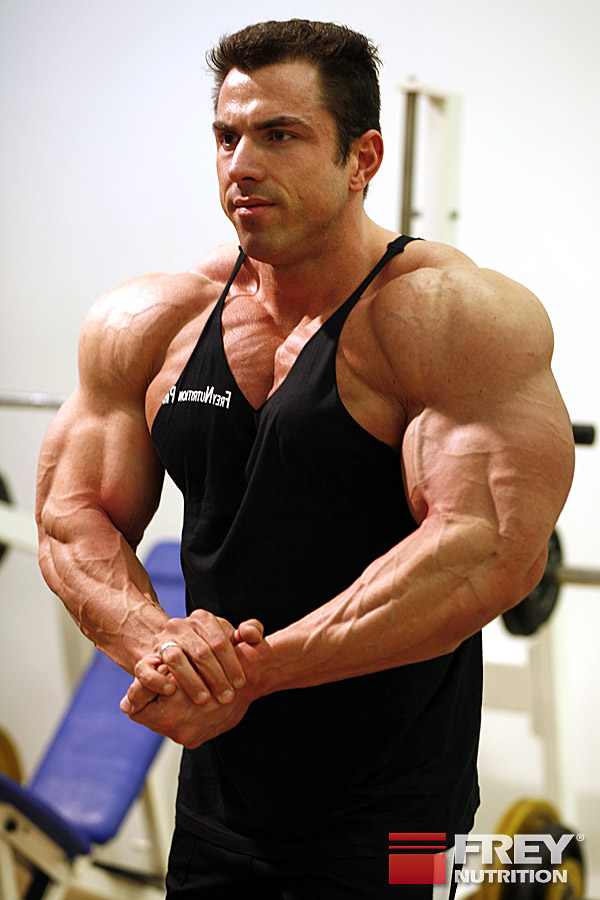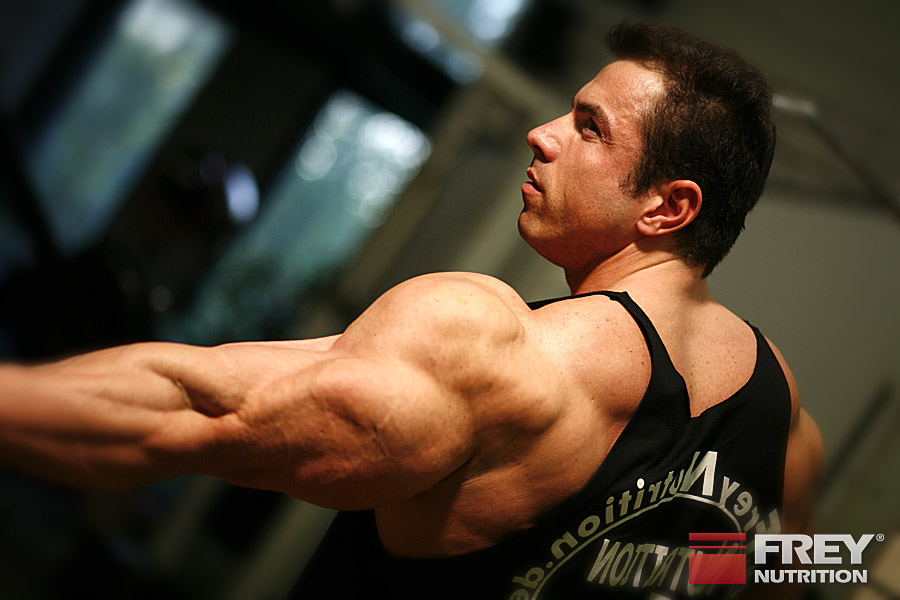A HETEROGENEOUS LOAD CAN COUNTERACT THE NATURAL ASYMMETRY.
?
I am 26 years old and I have been training for almost three years. I go to the gym four times a week and train each muscle once a week. I have the following problem, and I feel like I am pretty much alone with it. Recently I have noticed more and more that my muscles are different sizes. In particular, my left shoulder, my left arm and my left chest are a little smaller than my right side. Of my legs, only my left calf is a little smaller. I am left-handed and therefore a little stronger than my right. I hope you can give me some valuable tips, I don't want to have to miss out on training. ANSWER
!

No body is 100 percent symmetrical.
However, if the imbalance is more pronounced, you need to help it along. To do this, I recommend that you specifically train the weaker muscles. This can mean doing one or two extra sets or using additional weights for the affected areas. For example, shoulder presses with dumbbells would be a good option for you, in order to place more weight on your left shoulder and thereby stimulate growth.
It is important not to increase the weight too much, but only to one or two kilos, otherwise a clean movement cannot be guaranteed. You can also do one or two additional sets of lateral raises for your left shoulder. You can also do the same for your chest and arm training, for example by using heavier weights of one or two kilos on the left side when doing dumbbell incline bench presses.
One or two kilos more can compensate for deficits.
For your left calf, I recommend one or two sets of standing one-legged calf raises to challenge the weaker muscle more.
You should be patient with all of these measures, because such asymmetries do not disappear overnight. The bigger they are, the longer it takes to achieve balance through special training. You should definitely plan on a few months for this!











